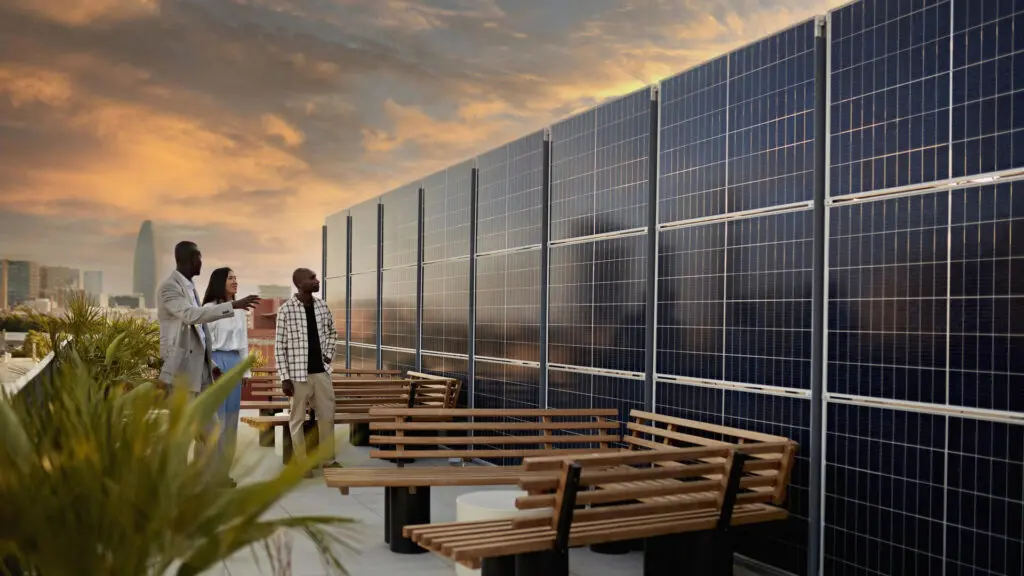
3 Ways Microgrids Meet Global Energy Challenges by Schneider Electric

Bala Vinayagam
Our global energy environment is rapidly evolving. Businesses and homes that traditionally only consume power are beginning to produce, store, and share it – we call this becoming a Prosumer. We are also witnessing a variety of energy uncertainties around the globe related to extreme weather & resilience needs, volatile pricing, and traditional fuel availability. In addition, we are still confronted with the fact that millions of people living in remote areas of our planet still do not have direct access to energy.
Our collective challenges in this new energy environment include decarbonization (reducing and curtailing carbon emissions), sustainable resilience (enabling businesses and homes to minimize downtime), and energy access (providing power to those populations on the planet who still have none).
Thanks to technology solutions that drive electrification and digitization, a new chapter in our energy revolution is emerging: Electricity 4.0. For both the utilities that deliver the energy and the businesses and homes that consume the power, Electricity 4.0 puts a resilient zero-carbon future accessible to all people on our planet in our grasp by optimizing supply, demand, and how supply and demand interact.
Understanding the global energy challenges (and how microgrids can help)
Energy-optimizing technology will be crucial in helping us to achieve our decarbonization, resilience, and energy access goals. However, these technologies must link and communicate within intelligent energy-management systems, such as microgrids, if true success is to be achieved. Let’s look at all three of these major challenges to see how microgrids can be applied:
1. Energy crisis – Rising and unstable energy costs negatively impact the businesses and municipalities they support. Energy supply disruptions increase business risk while rising energy costs diminish profitability. Microgrids can be vital in reducing business continuity risk with the ability to manage volatile energy costs in the best way. As a self-sufficient microcosm of the grid, microgrid systems can automate and control energy usage via advanced control, optimally managing on-site available power. Microgrids also leverage greater penetration for renewable energy, providing higher energy delivery efficiencies, energy savings, and carbon footprint reductions. For more information on how to meet the current energy crisis, access our new e-guide, “3 emergency measures for the European energy crisis”.
2. Extreme weather – In an environment where rising temperatures and extreme weather events compound the likelihood of unanticipated downtime, it becomes critical for utility and building owners to design higher degrees of resilience in their power infrastructures. Many are now turning to digitalized microgrid solutions capable of rapid recovery when disaster strikes. For example, in extreme disaster cases, nonprofit organizations such as the Footprint Project, in which Schneider Electric is a partner, work to coordinate emergency deployments of microgrids that provide energy and communication access to affected individuals and organizations. Utilities are also relying on microgrids to help them better address the threats of natural disasters such as wildfires. Decentralized microgrids help to minimize the extent and severity of resulting outages when fires rapidly spread across broad areas. In the case of extended outages, microgrid systems can be configured to run as “islands” that function independently of the grid, as a more conventional approach to long-term energy system resilience.
3. Access to energy – The United Nations has established Sustainable Development Goal 7 (SDG 7) as a critical initiative to ensure access to affordable, reliable, and sustainable energy for all by 2030. Today, one in seven people on the planet still has no access to energy, with most of these families living in the rural areas of sub-Saharan Africa, Latin America, and Southeast Asia. The International Energy Agency (IEA) estimates that by 2030, 674 million people will still lack access to energy. Therefore, all of us have a significant challenge ahead of us if we are to close this critical gap.
Schneider Electric works with local partners in these underserved regions by leveraging technological innovation to drive electrification and business growth. Microgrids empower rural and remote communities to thrive with accelerated access to reliable and sustainable energy. Such access provides power to homes, small businesses, public service buildings, agriculture, and other vital community needs.
The importance of choosing an experienced Electricity 4.0 partner
The benefits of deploying microgrids and related distributed energy resource management platforms continue to grow and are expanding the influence of major trends such as Electricity 4.0. Microgrids enable a new class of operators and owners of generation, storage, and load controls to emerge. And this type of energy consumption and production behavior increases the overall social benefit to the community of consumers.
Schneider Electric supports these efforts by offering connected technologies that allow businesses and municipalities to build a new energy future throughout the planning, building, operating, maintenance, and optimization of a system. Together, these can be essential to meeting solutions to global energy challenges.
To better understand the impact of the energy crisis on your business operations, emergency measures to reduce energy consumption, and prepare for the future, visit our website. And, for more information on how to meet the current energy crisis, access our new e-guide, “3 emergency measures for the European energy crisis”.